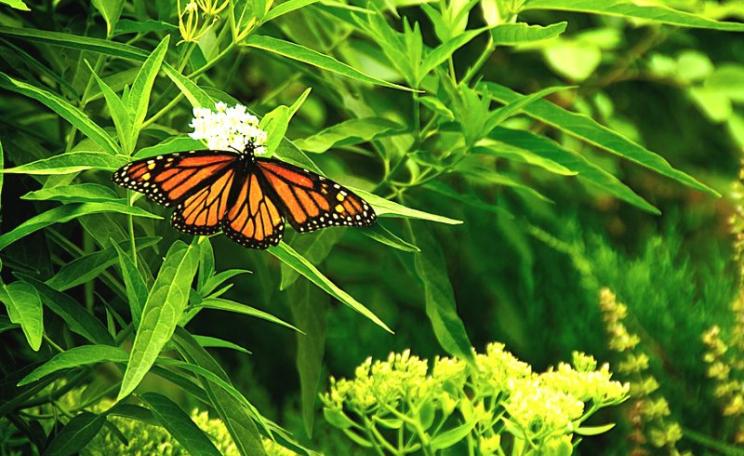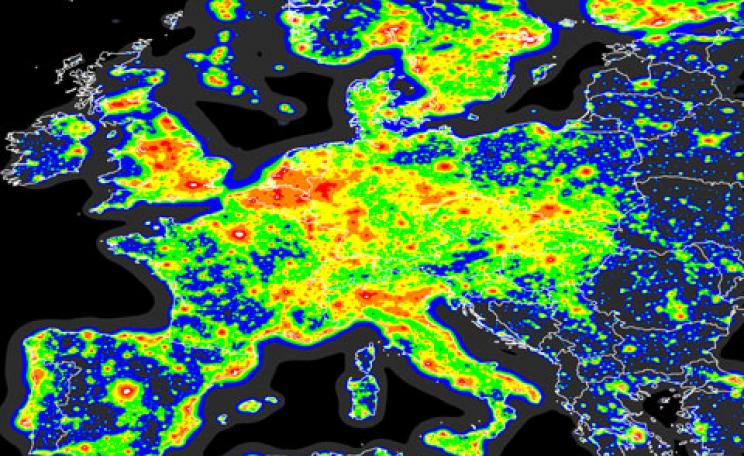We can eat oranges from South Africa, buy electronics made in China and can fly from the US to Europe in a matter of hours. As trade and travel have skyrocketed around the world, so too has our ability to bring exotic and foreign things back with us.
For centuries, horticulturists, plant lovers, ecologists, landscapers and others have imported plants for exotic aesthetic appeal, or usefulness in righting a degraded landscape.' As trade increased and travellers had the capacity to bring more things with them, it [the trade in invasive species] has proliferated,' says Lori Williams, executive director of the U.S. National Invasive Species Council.
Enthusiastic flora introductions have brought a raft of unintended consequences with them: at first a new plant succeeds but then adapts too well to its surroundings and spreads out of control. Some of these plants flourish so much in new territories that they became threats to native species’ very survival.
As well as intentional introductions, pest plants also travel 'undercover' - hitchhiker seeds and plants arrive in crates or crevices and sneak past border controls. Seeds get stuck in tyre or shoe treads or creep in as soft packing material. Such unintentional introductions have brought in invasive grasses and other plants before stricter trade regulations were put into place.
Ecological harm
In Africa, an unexpected source of alien plants is their accidental introduction through emergency food aid involving grains, according to ecologist Geoffrey Howard, African global invasive species coordinator for the International Union for Conservation of Nature. Contamination can occur because such aid is often urgent and the main emphasis is on feeding people, so paying attention to possible plant invasions rarely happens. Once there, alien plants spread through the continent in vehicles tyre treads, through local trade and by a host of other means. Invasive species, both plant and animal, are considered to be the second most important threat to biodiversity after habitat destruction, yet haven’t retained the limelight like other global environmental problems.
As invasive plants claim more acres worldwide, these hidden green threats cause ecological harm as well as wreaking havoc on economies and humans. 'Invasive plants have an impact on wild fires, soil erosion, siltation of dams and estuaries, flooding, water quality and more,' says Guy Preston, chairperson and national programme leader for the Natural Resources Management Programmes in South Africa.
The most serious plant threats have the ability to create monocultures – crowding out food sources for native animals, altering soil chemistry and canopy composition. Islands are particularly vulnerable. 'If you saw miconia in Hawaii, you’d think it was pretty,' says Williams, 'but it shades other plants – Maui [one of the Hawaiian islands] is covered in it.'
According to Preston, in South Africa, invasive plants are using six percent of the country’s mean annual run off of fresh water, and that this figure could rise to 20 percent if they are left unchecked. The impact of invasives is heavily felt in Africa since the vast majority of people rely on natural resources for their survival. 'In many African countries, food security, education and general development must take priority for government funding and so resources for such management are often absent or unsustainable,' says Howard.
Economic cost
These unintentional imports cost economies around the world millions of dollars. In China, invasive species cause an economic loss of US$29.3 billion every year, according to the Department of Nature and Ecology Conservation. Invasive weeds such as water hyacinth contribute to some US$7 billion in economic losses. In the UK, invasive non-native species (plants, plant pathogens and animals) are estimated to cost the economy £1,700,000,000 annually, with plants inflicting the highest costs, according to Sophie Thomas, invasive plants officer for Plantlife in the UK.
Most countries – even in regions that have relatively few invasive species, such as Alaska – have seen a rise in invasive plant species in past decades. North American ecosystems struggle against Asian and European plants, such as Japanese honeysuckle and cogongrass. In the Caribbean, the highly invasive Australian native melaleuca tree was deliberately brought to Florida and the Bahamas Islands; now the species poses a severe threat to biodiversity because of its dominant nature and ability to form virtual monocultures.
Just as Asian plants have invaded American and European environments, plants originating in the U.S. and EU have invaded Asia. Smooth cord grass, from the U.S.A, was introduced to protect Chinese beaches in 1979. Now, the grass dominates salt marshes and threatens to displace coastal mangrove forests. Problem plants in Africa originate from Mexico, the Meso-American Peninsula, the Amazon drainage basin and other tropical parts of Latin America, according to Howard.
South Africa, in particular, has had more plant introductions than its African neighbours. An established nursery industry has contributed to the fact that South Africa has almost 300 invasive plant species while the country's large number of different biomes and a range of climatic zones has also played a role. Asia and Australia have, in turn, received alien species from Africa.
'Compared to other parts of the world such as Hawaii, the biodiversity problems we face as a result of invasive plants may be considered comparatively small,' Thomas states. Plants such as Japanese knotweed, giant hogweed and false acacia are inflicting ecosystem damage, he adds. This global spread could worsen with climate change, too, as plant ranges inch further north and south with changing temperature zones.
Outlawed flora
The world’s worst plant invaders are listed among the ‘100 of the World’s Worst Invasive Alien Species,’ compiled by the Global Invasive Species Database. The worst global plant threats include leafy spurge, native to Europe and temperate Asia, but found throughout the world (except in Australia), where it’s one of the first plants to emerge in the spring, displacing native vegetation. Purple loosestrife originated in Europe but has made itself a nuisance in North America, Australia, and South Africa, where it competes with native fauna and can overrun wetlands and open water habitat. Mile-a-minute weed, a stringy vine covered in tiny barbs, originated in South and Central America, is now one of the most widespread and problematic weeds in the Pacific region and is a pest throughout the world.
Water hyacinth has proved itself a scourge in open waters from China through to Africa and southern Europe by forming dense mats on acres of open water. These mats block sunlight and air from entering the water, prevent fishing and water collection, and clog drainage canals and hydroelectric power systems. Feverfew, an invasive herb, is taking hold in eastern, southern and western Africa, spreading along roadsides as well as both farmed and wild areas across several countries, says Howard, displacing crops and pasture plants in the process, and causing respiratory diseases in people.
Solutions and enforcement
'The solutions to these problems are easily stated but extremely difficult to implement,' Howard told the Ecologist, 'especially in the long term.' Prevention is the best measure, but figuring out which species are likely to become invasive is a gargantuan undertaking requiring time and resources.
In the US, the Department of Agriculture can regulate plant pests but only the species listed as '110 official noxious weeds.' 'A lot of plants aren’t regulated unless they’re found to be a plant pest,' says Williams. More research is needed to find out with non-natives are likely to cause trouble. Solutions, however, are forth-coming. Researchers champion biological controls in the fight against invasives, though the search to find bio-controls that don’t cause new problems themselves takes time and funding. In Lake Victoria, water hyacinth once engulfed the edges of the lake, but the three countries bordering the lake — backed by funding from the World Bank — used small Amazon beetles to control the aquatic invader. Within ten years, 95 percent of the water hyacinth was gone.
In addition, stronger laws – and enforcement – are essential. In regions throughout the world, problems can occur when private landowners allow invasives to go wild. Many countries have ramped up legal barriers to non-native plants crossing national borders. Australia in has cracked down with tight bio-security laws that cover all invasives. 'Australia is the world leader, with the strictest plant protection laws,' says Williams. A screening system for imports uses a blacklist for known invaders and a white list on plants that they don’t have enough information on.
In the UK, the government is currently considering whether or not to ban the sale of some of the most invasive plants. Europe has measures in place to inspect plant imports for potentially invasive pests, but is currently missing measures to control hitchhikers (stock contaminated with invasive plants) or the powers to stop known invasive plants passing between borders, says Thomas of PlantLife.
'We need to address our bio-security at our borders,' says Preston. 'We have 346 invasive alien plant species proposed for our new lists. This figure will continue to escalate unless we tighten our controls over what is coming into the country.'
The 'Invasive species: new natives in a changing climate?' conference takes place on the 23 March at Hamilton House, Mabledon Place, London WC1H 9BD
| READ MORE... | |
 |
NEWS ANALYSIS Aquatic invaders threat to biodiversity Non-native invasive water plants threaten biodiversity and ecosystems. You’d expect to find them on a banned list, not on sale at UK garden centres. |
 |
NEWS Plant life in peril - IUCN and Kew Gardens study Alarming new research reveals human activity is 'devastating' plant life ahead of UN biodiversity summit, with up to twenty-two per cent of the world’s plants facing extinction |
 |
GREEN LIVING Soil Stained Survivors: how gardening is helping those caught up in the Balkan wars For over a decade, a pioneering project in Bosnia and Herzegovina has been transforming war torn lives through the power of plants. But now their money has run out. Helen Babbs meets the gardeners facing up to an insecure future |
 |
COMMENT Why botanic gardens are key to our future The unsung heroes of conservation, botanic gardens are quietly acting as 'arks' for our planets endangered plant species. And we should be very glad they are too... |
 |
NEWS ANALYSIS Good Natured Fruit 'pesticide-free' claims in doubt Multi-million pound brand Good Natured Fruit is marketed in Asda and Sainsbury's as 'pesticide free', but the company now admits it allows chemicals to be used during plants' life-cycle |








